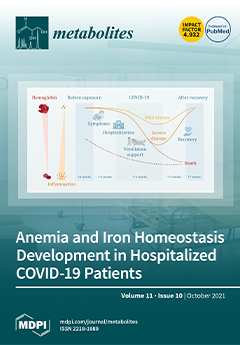Open microalgal ponds used in industrial biomass production are susceptible to a number of biotic and abiotic environmental stressors (e.g., grazers, pathogens, pH, temperature, etc.) resulting in pond crashes with high economic costs. Identification of signature chemicals to aid in rapid, non-invasive, and
[...] Read more.
Open microalgal ponds used in industrial biomass production are susceptible to a number of biotic and abiotic environmental stressors (e.g., grazers, pathogens, pH, temperature, etc.) resulting in pond crashes with high economic costs. Identification of signature chemicals to aid in rapid, non-invasive, and accurate identification of the stressors would facilitate targeted and effective treatment to save the algal crop from a catastrophic crash. Specifically, we were interested in identifying volatile organic compounds (VOCs) that can be used to as an early diagnostic for algal crop damage. Cultures of
Microchloropsis gaditana were subjected to two forms of algal crop damage: (1) active grazing by the marine rotifer,
Brachionus plicatilis, or (2) repeated freeze–thaw cycles. VOCs emitted above the headspace of these algal cultures were collected using fieldable solid phase microextraction (SPME) fibers. An untargeted analysis and identification of VOCs was conducted using gas chromatography-mass spectrometry (GC-MS). Diagnostic VOCs unique to each algal crop damage mechanism were identified. Active rotifer grazing of
M. gaditana was characterized by the appearance of carotenoid degradation products, including β-cyclocitral and various alkenes. Freeze–thaw algae produced a different set of VOCs, including palmitoleic acid. Both rotifer grazing and freeze–thawed algae produced β-ionone as a VOC, possibly suggesting a common stress-induced cellular mechanism. Importantly, these identified VOCs were all absent from healthy algal cultures of
M. gaditana. Early detection of biotic or abiotic environmental stressors will facilitate early diagnosis and application of targeted treatments to prevent algal pond crashes. Thus, our work further supports the use of VOCs for monitoring the health of algal ponds to ultimately enhance algal crop yields for production of biofuel.
Full article






